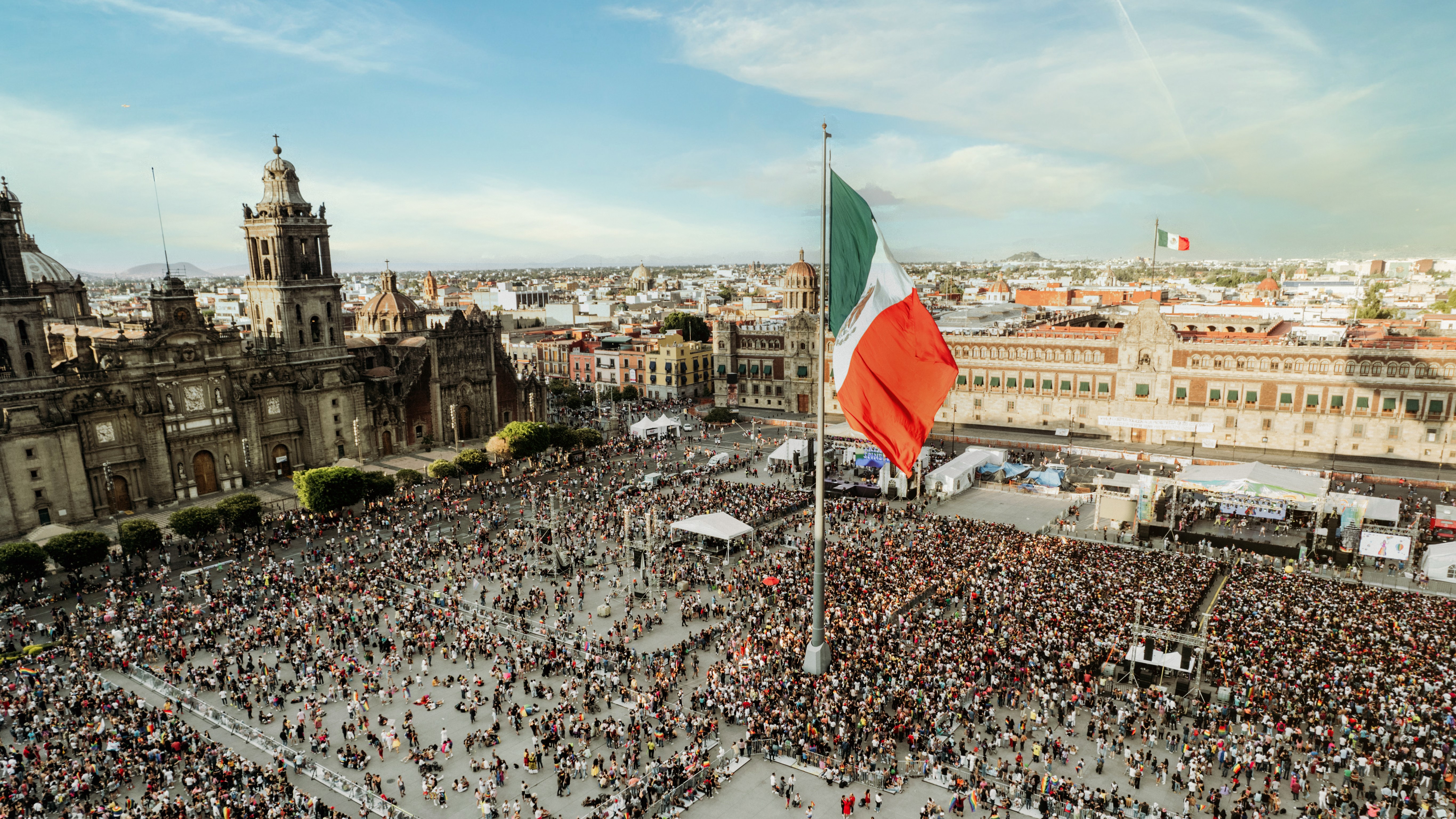Mexico City could be just months away from running out of drinking water
Record droughts have been draining Mexico City's aquifers faster than they can be replenished, placing the city at risk of severe water shortages.

Mexico City is facing severe water shortages that could see large parts of the city run dry in months.
The megacity and its environs, home to approximately 22 million people, has been suffering from moderate to exceptional drought since the beginning of 2024. In an effort to conserve this water, officials have restricted access for many residents to an hour or so of water every few days.
A combination of factors — including diminishing rainfall, increased temperatures, leaky infrastructure and urban sprawl — are pushing the city's water supply further to the brink. Without drastic measures experts have warned that a "day zero," where freely-available water services completely collapse across the city, could be just a few months away.
"We're extracting water at twice the speed that the aquifer replenishes. This is causing damages to infrastructure, impacts on the water system and ground subsidence," Jorge Alberto Arriaga, the coordinator of the water network for the National Autonomous University of Mexico, told Spanish newspaper El Pais.
Roughly 60% of Mexico City's water comes from an underground aquifer and the remainder is pumped uphill from outside the city. But the aquifer has been overused, causing the land to sink at a rate of around 20 inches (51 centimeters) per year since 1950.
The pumped water, on the other hand, is prone to leaks, with 40% of its contents getting lost in transit. And as much of the once-permeable ground is now covered in concrete, the water doesn’t necessarily seep back into aquifers.
According to Reuters, the biggest of these systems, the Cutzamala System, was pumping only 39.7% of its full capacity at the end of January. This is a decrease from 41% in December, and a sharp decline from 54% in January 2023.
Get the world’s most fascinating discoveries delivered straight to your inbox.
The city's situation is compounded by its geography and history. Situated at high-altitude, it was once the location for the Aztec city of Tenochtitlan — a city founded on an island on Lake Texcoco and built outward through an ingenious network of canals, bridges and artificial islands.
After conquering Tenochtitlan in 1521, the Spanish tore down the city and drained its lake, founding Mexico City on the soft, clay-rich soil of the lake bed. The result is a metropolis vulnerable both to earthquakes and, from the destruction of its natural water cycle, droughts.
These droughts have been getting longer and harsher, partly because of climate change and also due to this year's El Niño climate pattern (which has boosted temperatures in the region and across Latin America).
To address the problem, officials have said they will begin to dig for more wells around the city alongside improving wastewater treatment to ensure all residents get enough water.
Whether or not these efforts avert "day zero", or whether it has already begun to arrive, remains to be seen.
"We have to consider that 'day zero' is now, because the rivers are contaminated, the springs are overexploited, this is what we must understand," José Antonio Rodríguez Tirado, a water management consultant who gave advice to Mexico’s Chamber of Deputies on the crisis, told Forbes Mexico.
With the monsoon season not due to arrive until May or June, residents have some time yet until there is a reprieve.

Ben Turner is a U.K. based writer and editor at Live Science. He covers physics and astronomy, tech and climate change. He graduated from University College London with a degree in particle physics before training as a journalist. When he's not writing, Ben enjoys reading literature, playing the guitar and embarrassing himself with chess.


